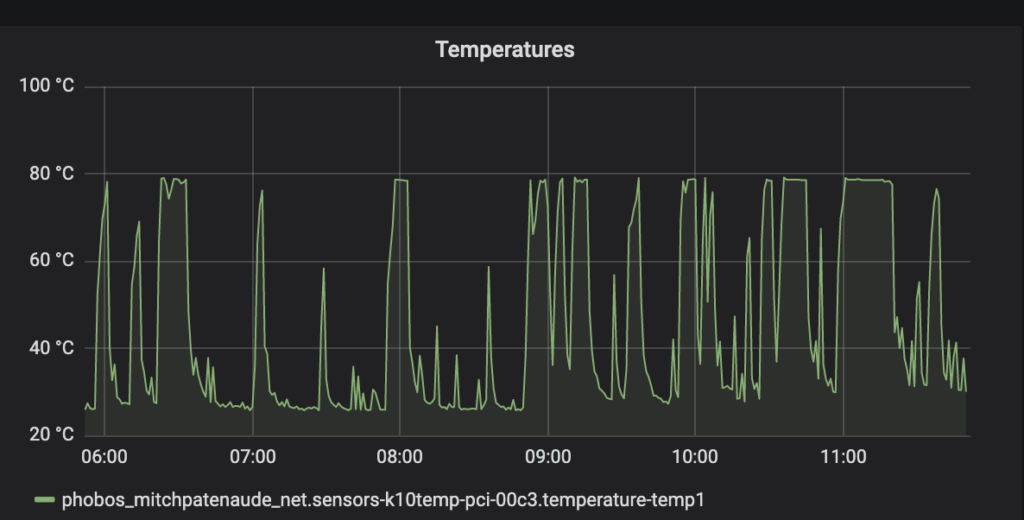I’ve got the server end of the solution a little farther along. It now recognizes multiple buffers as belonging to the same sound, can group those sounds into likely pairs for comparison, automatically determine their time skews (offsets) and associate them with an event.
There are still problems getting the microcontrollers to agree on what time it is, and now the server is problematic as well. As I mentioned previously, the algorithm that I use to determine the time offsets is CPU intensive, and now that it’s being done automatically the server is under much heavier load. It’s got 8 cores, so dedicating 4-6 of them to running parallel computations shouldn’t be an issue. Apparently however, the heat-sink on the CPU isn’t as effective as it could be, so first the CPU frequency scales up to handle the load, which causes the temperature to shoot up to nearly 80℃ (see below) which causes the CPU to scale back it’s frequency to deal with the heat. I suspect that all that scaling up and down is playing havoc with it’s internal timekeeping, because it suddenly loses track of the time by 500ms or more, causing it to inappropriately break up new sounds into multiple buffers as the time jumps back and forth. It’s also messing up the microphone microcontrollers, which suddenly get large offsets from the server, quickly followed by large offsets in the opposite direction as the server time corrects itself.

So I’m going to take two steps to combat this. First I’m going to take the heatsink off the CPU and see if I can get it to be more effective by cleaning the surfaces and applying a thin coat of new thermal compound. Second, I’m going to move the role of NTP server to a new box that doesn’t have as much of an issue with spiky cpu load. (And if that isn’t stable enough, I may dedicate a Raspberry Pi act as a NTP server.)